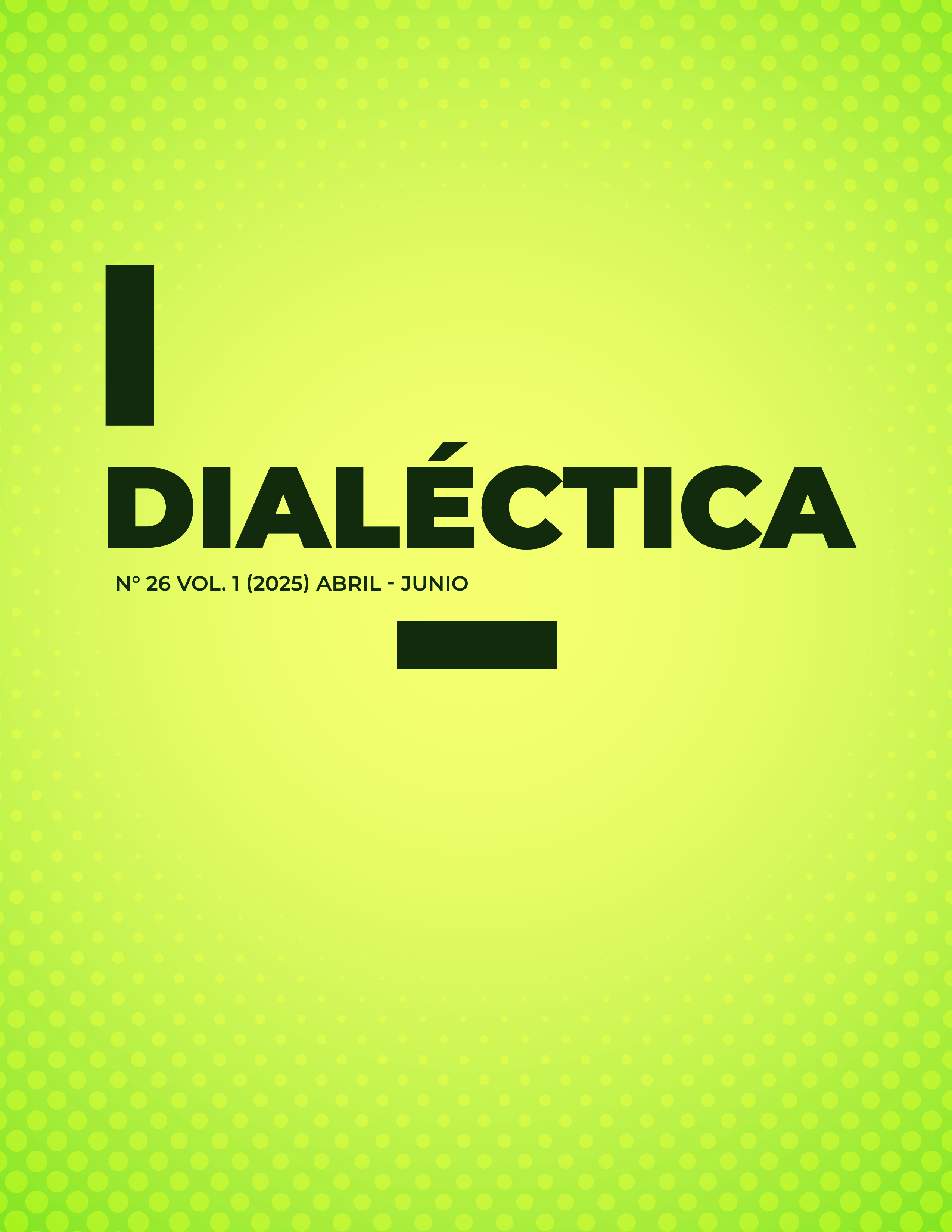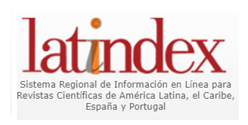GENERATIVE ARTIFICIAL INTELLIGENCE IN CURRICULAR PLANNING: BETWEEN HALLUCINATIONS AND CERTAINTIES.
DOI:
https://doi.org/10.56219/dialctica.v1i26.4414Keywords:
Generative Artificial Intelligence, curriculum planning, hallucinations, educationAbstract
This article analyzes the pedagogical implications of Generative Artificial Intelligence (GAI) in curriculum planning, with special attention to the phenomenon of hallucinations, defined as seemingly plausible but factually incorrect content. Through a systematic review of scientific literature from 2020-2025 in specialized databases such as Scopus, Web of Science, ScienceDirect, and others, the intersection between GAI, primarily represented by Large Language Model (LLMs) such as GPT-4.5, Claude Sonnet 3.7, Gemini Advanced, among others, and curriculum design processes guided by Colombia's Ministry of National Education (MEN) is examined. This literature review shows that, while GAI presents significant opportunities to optimize educational tasks such as curriculum planning, the generation of teaching materials, and assessments, hallucinations constitute a considerable risk to take into account. These can be classified into factuality hallucinations, understood as discrepancies with verifiable facts, and fidelity hallucinations, which refer to deviations from given instructions or lack of internal coherence, both with the potential to compromise essential components of curriculum planning such as learning objectives, content, and assessment. The results suggest that to effectively leverage GAI in educational environments, it is necessary to develop specific digital literacy competencies in teachers, implement institutional information verification protocols, and establish triangulation strategies with reliable academic sources. This reflective approach will allow balancing technological innovation with the preservation of educational quality, taking advantage of the personalization and efficiency benefits offered by GAI while mitigating the risks associated with hallucinations.
Downloads
References
Acquah, B. Y. S., Arthur, F., Salifu, I., Quayson, E., & Nortey, S. A. (2024). Preservice teachers' behavioural intention to use artificial intelligence in lesson planning: A dual-staged PLS-SEM-ANN approach. Computers and Education: Artificial Intelligence, 7, 100307. https://doi.org/10.1016/j.caeai.2024.100307 DOI: https://doi.org/10.1016/j.caeai.2024.100307
Arnaz, J. (1981). La planificación curricular (2nd ed.). Editorial Trillas.
Ayanwale, M. A., Nishangase, S. D., Adelana, O. P., Afolabi, K. W., Adam, U. A., & Olatunbosun, S. O. (2024). Navigating the future: Exploring in-service teachers' preparedness for artificial intelligence integration into South African schools. Computers and Education: Artificial Intelligence, 7, 100330. https://doi.org/10.1016/j.caeai.2024.100330 DOI: https://doi.org/10.1016/j.caeai.2024.100330
Bello, A. (2023). Planificación educativa transformacional como estrategia pedagógica en la educación primaria: una revisión sistemática para fortalecer la praxis docente en tiempos de incertidumbre. Sinopsis Educativa: Revista Venezolana de Investigación, 23(1), 48-56. https://revistas.upel.edu.ve/index.php/sinopsis_educativa/article/view/2895/3210
Capera Figueroa, J. J. (2023). Planificación educativa en los procesos pedagógicos en el marco de la praxis formativa del educador crítico en la escuela. Revista nuestrAmérica, 22, e10357325.
Choez, P. (2024). Éxito del desempeño docente mediante la planificación didáctica. CIENCIAMATRIA: Revista Interdisciplinaria de Humanidades, Educación, Ciencia y Tecnología, 10(18), 391-404. https://doi.org/10.35381/cm.v10i18.1307 DOI: https://doi.org/10.35381/cm.v10i18.1307
Collie, R. J., Martin, A. J., & Gašević, D. (2024). Teachers' generative AI self-efficacy, valuing, and integration at work: Examining job resources and demands. Computers and Education: Artificial Intelligence, 7, 100333. https://doi.org/10.1016/j.caeai.2024.100333 DOI: https://doi.org/10.1016/j.caeai.2024.100333
Giannini, S. (2023). La IA generativa y el futuro de la educación. UNESCO. https://doi.org/10.54675/ACWQ6815
González, A. (2022). La planificación curricular: Punto de partida del trabajo pedagógico. Cultura, Educación y Sociedad, 13(1), 219-232. http://dx.doi.org/10.17981/cultedusoc.13.1.2022.13 DOI: https://doi.org/10.17981/cultedusoc.13.1.2022.13
Hashem, R., Ali, N., El Zein, F., Fidalgo, P., & Abu Khurma, O. (2024). AI to the rescue: Exploring the potential of ChatGPT as a teacher ally for workload relief and burnout prevention. Research and Practice in Technology Enhanced Learning, 19, 023. https://doi.org/10.58459/rptel.2024.19023 DOI: https://doi.org/10.58459/rptel.2024.19023
Huang, L., Yu, W., Ma, W., Zhong, W., Feng, Z., Wang, H., Chen, Q., Peng, W., Feng, X., Qin, B., & Liu, T. (2024). A survey on hallucination in large language models: Principles, taxonomy, challenges, and open questions. ACM Transactions on Information Systems, 42(3), Article 58, 1-58. https://doi.org/10.1145/3703155
IBM. (2023). What are AI hallucinations? https://www.ibm.com/think/topics/ai-hallucinations
Ji, Z., Lee, N., Frieske, R., Yu, T., Su, D., Xu, Y., Ishii, E., Bang, Y. J., Madotto, A., & Fung, P. (2023). Survey of hallucination in natural language generation. ACM Computing Surveys, 55(12), 1-38. https://doi.org/10.1145/3571730 DOI: https://doi.org/10.1145/3571730
Navarro, Y., Pereira, M., Pereira, L., & Fonseca, N. (2010). Una mirada a la planificación estratégica curricular. Telos, 12(2), 202-216. https://www.redalyc.org/pdf/993/99315569006.pdf
OpenAI. (2025). Introducing GPT-4.5. https://openai.com/index/introducing-gpt-4-5/
Salih, S., Husain, O., Hamdan, M., Abdelsalam, S., Elshafie, H., & Motwakel, A. (2025). Transforming education with AI: A systematic review of ChatGPT's role in learning, academic practices, and institutional adoption. Results in Engineering, 25, 103837. https://doi.org/10.1016/j.rineng.2024.103837 DOI: https://doi.org/10.1016/j.rineng.2024.103837
Taba, H. (1984). Elaboración del currículo (1st ed.). Editorial Troquel.
Tan, X., Cheng, G., & Ling, M. H. (2024). Artificial intelligence in teaching and teacher professional development: A systematic review. Computers and Education: Artificial Intelligence, 8(C), 100355. https://doi.org/10.1016/j.caeai.2024.100355 DOI: https://doi.org/10.1016/j.caeai.2024.100355
Tobón, S., Montoya, J., Ospina, B., González, E., & Domínguez, E. (2006). Diseño curricular por competencias: Programa para la formación de docentes (1st ed.).
Vaswani, A., Shazeer, N., Parmar, N., Uszkoreit, J., Jones, L., Gomez, A. N., Kaiser, Ł., & Polosukhin, I. (2017). Attention is all you need. In Advances in Neural Information Processing Systems 30 (NeurIPS 2017) (pp. 5998-6008). https://arxiv.org/abs/1706.03762
Xu, Z., Jain, S., & Kankanhalli, M. (2025). Hallucination is inevitable: An innate limitation of large language models. arXiv preprint arXiv:2401.11817v2. https://doi.org/10.48550/arXiv.2401.11817
Downloads
Published
How to Cite
Issue
Section
License

This work is licensed under a Creative Commons Attribution-NonCommercial-ShareAlike 4.0 International License.
La revista Dialéctica conserva los derechos patrimoniales (copyright) de las obras publicadas, que favorece y permite la reutilización de los mismos bajo la licencia Creative Commons Atribución-NoComercial-CompartirIgual 4.0 , por lo cual se pueden copiar, usar, difundir, transmitir y exponer públicamente, siempre que se cite la autoría y fuente original de su publicación (revista, editorial, URL y DOI de la obra), no se usen para fines comerciales u onerosos y se mencione la existencia y especificaciones de esta licencia de uso. Si remezcla, transforma o crea a partir del material, debe distribuir su contribución bajo la misma licencia del original.











